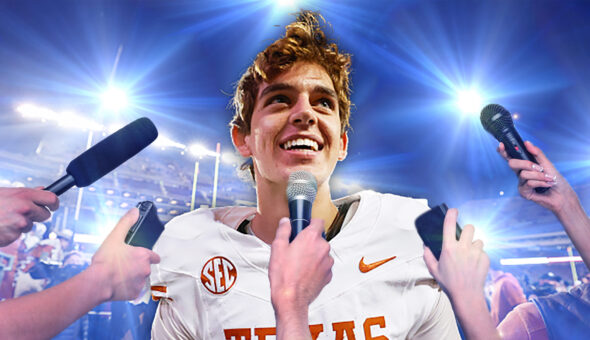SAN FRANCISCO — Diversity Abroad’s 10th annual Global Inclusion Conference was held October 2-7, bringing together hundreds of international officers, diversity and inclusion professionals and academic directors to spark discourse around the future of study abroad programming in higher ed. With a mission of “advancing diversity, equity, and inclusion in global education and cultural exchange,” representatives exemplified the paramount role that study abroad programming has in facilitating improved country-to-country relations.
Among more than 70 sessions and 130 speakers, there were conversations about “Is Virtual Programming Synonymous With Access?” and “Applying a Postcolonial Feminist Lens and Socioecological Model to Student Abroad Preparation.” Represented organizations in attendance included London Metropolitan University, NYU Global Programs, The Amandla Project and the Global Education Network (CAPA).
As expected, there has been a spike in American students who are interested in studying internationally since the pandemic. After nearly two years of being removed from campuses and integrated into a virtual learning system, U.S. undergraduate and graduate students are eager to jump back into face-to-face connection, expanding the breadth of their education by being integrated into a city’s culture, lifestyle and language. As many leaders at the Global Inclusion Conference concluded, virtual engagement and participation in study abroad programs was still fervent the past two years, despite the COVID-19 pandemic.
Sparking International Interest
Cybèle Cochran, an outreach officer at the USA Study Abroad Branch for The Department of State, Bureau of Educational & Cultural Affairs, led a panel with Caitlin Ting and Carolyn Arena on the CLS Spark program, a virtual initiative for U.S. undergraduate students to learn languages essential to America’s engagement with the world. The approximately 80 students that are accepted to CLS Spark per semester spend eight weeks during the summer learning Arabic, Chinese or Russian through online classes and activities facilitated by native speakers at a CLS partner institution abroad.
As Cochran, Ting and Arena explained, the program constructs specific experiences to mirror not only the educational experience of studying abroad but also the cultural and social aspects. Examples include 10 hours of intensive live group instruction a week, cultural activities and individual consultations with language instructors at a host institute, as well as monthly professional development workshops and inclusive support.
This comprehensive program is aimed at students who are interested in learning Arabic, Chinese or Russian when they may not have access to studying these languages on their campuses. Arena shared that these three languages are among the most commonly used in immigrant communities throughout America, and many students pursuing community-facing vocations, such as nursing, teaching and public policy, were especially interested in the 2022 program.
“CLS Spark is increasing accessibility for those students who may have a lack of access to learning languages,” Arena said. “The people to people connection that students gain when learning a new language lends its way to diverse connections throughout the world. When studying a language, a student is partaking in the study of both the language and the culture.”
The continued success of study abroad programming — despite a two-year halt in international travel during the pandemic — signals a hopeful future for U.S. students, universities and country-to-country relations.
Closing Inequity Gaps
As the pandemic forced many academic institutions to consider virtual programming options, CLS Spark directly addressed the gap in access for students who did not receive enough federal funding within the last few years. Virtual programs, such as CLS Spark, have helped to minimize the barriers for working students who may be financially supporting their families.
As with any educational program, virtual learning does not come without its challenges. Many in higher ed have gradually adjusted from working within an office’s four walls to communicating within the confines of Zoom rooms, and the issues of internet unreliability and lack of equipment for both students and partners abroad means that there have been inevitable differences in privilege and access. Additionally, the benefits of community building, cohort support and lasting connections each take more initiative to build and sustain.
However, it is safe to say that the continued success of study abroad programming — despite a two-year halt in international travel during the pandemic — signals a hopeful future for U.S. students, universities and country-to-country relations.
Success Through Scholarships
During the conference, Ethan Rosenzweig, the Deputy Assistant Secretary for Academic Programs at the Bureau of Educational and Cultural Affairs for the The Department of State, celebrated the institutions that supported students in their pursuit of the Benjamin A. Gilman International Scholarship during the past year — showing the steady trend of increased interest and participation every year.
The Benjamin A. Gilman International Scholarship is a grant program funded by the U.S. Department of State that specifically focuses on students with limited financial means who have dreams of studying or interning abroad. These undergraduate students must be U.S. citizens who receive Federal Pell Grant funding at a two-year or four-year institution. Past recipients are crucial to the central mission of improving diplomatic relations because they encourage students of all backgrounds to study abroad. As a former Pell Grant recipient who was inspired by his own study abroad experiences, Rosenzweig is deeply passionate about his work with the new generation of students.
“We can’t show America to the world without showing all of its faces,” Rosenzweig said. “These students are citizen diplomats. It’s important that we’re spreading these opportunities as far and wide as we can.”









